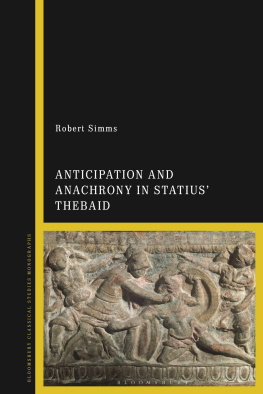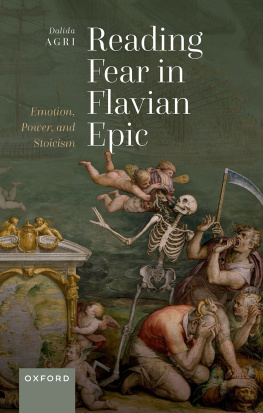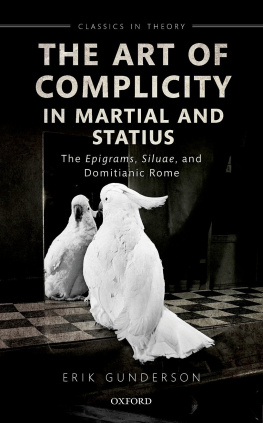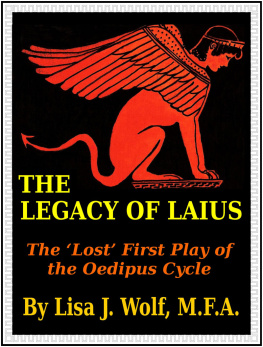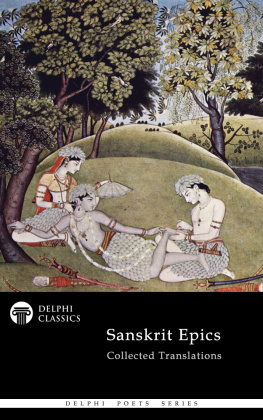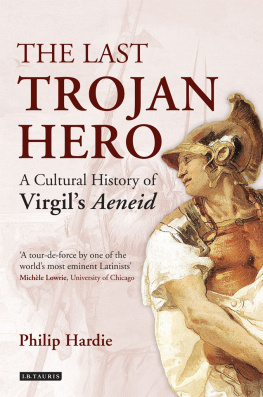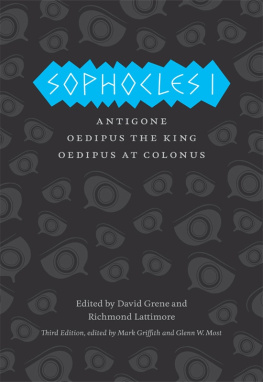
Anticipation and Anachrony in
Statius Thebaid
Also published by Bloomsbury
Statius, Poet Between Rome and Naples, Carole E. Newlands
Silver Latin Epic, H.M. Currie
Statius: Silvae IV, edited by K.M. Coleman
The Poet Lucan: Studies in Rhetorical Epic, Mark P.O. Morford
Lucan: Bello Civili I, edited by Robert J. Getty

Contents
Statius Thebaid has been a long and rewarding preoccupation and I am grateful to have worked with many encouraging and helpful friends and colleagues along the way. Bill Dominik read and guided the dissertation that sprouted a scrappy little seed which, in the fullness of time, would become the present book. A kinder and more patient Doktorvater could not have been hoped for. John Garthwaite, Neil Bernstein, and Antony Augoustakis were also enthusiastic and helpful supporters. I have carried this book from Dunedin, New Zealand, to the hinterlands of Oman, to Tokyo, Japan and most recently, Oslo, Norway, where I am especially grateful to the Institutt for filosofi, ide- og kunsthistorie og klassiske sprk at UiO for providing a welcome postdoc and koselig environs in which to complete this study. Here, in particular, I am indebted to Silvio Br, Mathilde Skoie, Eirik Welo, and visiting from Uppsala, Ingela Nilsson. I was as much professionally as personally privileged to receive gracious funding that allowed five weeks at the Norwegian Institute in Rome. Just to be there, ah! Lastly, I thank my children (Mira Jo, Camilla, and Noah) who made it all worthwhile and matter most. As I close this project I am struck, and a little saddened, by how long it took, and by how much longer I wish it could have taken.
R.C.S.
Reno, Nevada
February 2019
In the first book of Statius Thebaid When Statius commenced his epic poem on the quarrelsome sons of Oedipus he was well aware that this was a popular tale, one that if not done properly would be tiresome to his audience. When Statius Tisiphone travels this notum iter ad Thebas and infests the home with its usual pestilence (adsuetaque infecit nube penates, 1.124), there is the suggestion that in terms of literary reproduction this story has been done many times before.
Despite the continued eagerness among Roman audiences for Greek myth, its continual reproduction did not please everyone. Martial, Statius contemporary under Domitian, twice disparages the value of mythic stories. In the first instance he berates Mamurra for delighting in such shallow trash and he indicts a catalog of works for being unable to address or improve readers (10.4.112).legend remained popular enough to be found in circulation, but familiar enough to be scoffed at as trifles. Martial is critical of stories that are so well-known that they have become tiresome, no longer able to hold philosophical or aesthetic interest. Thus, the inherent predictability of recycled narratives was clearly a hazard for Roman poets. Notably, the desire for novelty and the difficulty of attaining it within a highly recidivist literary system was by no means unique to the Romans; their Greek forbears were similarly aware of this issue. In a fragment recorded in Aristotles Rhet. 1451a, the poet Choerilus suggests: , , | , , hes blessed, that one, who in those days was servant to the Muses and sang skilled songs, while the meadow still lay unmown (fr. 317.12). It must have taken some maneuvering to reconstitute familiar stories in such a way as to make them compelling. Thus, it is not unreasonable to suppose that when Statius brought out his Thebaid, which treats a well-known myth and was certain to be measured against familiar antecedent versions, the epic could well have flopped, but it did not, and it is worth considering why not.
Statius knew that his Thebaid was competing for a place within an established literary tradition. In the invocation to his unfinished Achilleid he reflects on the reception of his Theban epic: scit Dircaeus ager meque inter prisca parentum | nomina cumque suo numerant Amphione Thebae, The fields of Dirce know my song, and Thebes numbers me among the ancient names of her parents and with her own Amphione (1.1213). In no place is Statius specific about which of the prisca nomina his Thebaid should be, or even could be, counted among. His hope to rival the greatest of the ancient epic poets, however, can be observed at Silvae 5.3.613 and in the coda to the Thebaid (12.8167) where he expresses the wish that his work be second only to Virgils. Since treatments of the Oedipodionidae fratres were undertaken in epic, dramatic, and lyric poetry his comments in the Achilleid suggest he had chosen to contend with a varied poetic corpus. Statius confident standing among other poets and genres that produced treatments of the conflict between Eteocles and Polynices raises several questions, foremost of which are these: what is it about Statius epic that warrants a place among these prisca nomina and which of the several treatments might he have had in mind? These questions cannot be fully answered, certainly, but a brief survey of possible candidates and what is known of their work demonstrates a rich and suggestive repository of potential influence. We cannot be unconditionally certain about Statius knowledge of any of these works, but a few undoubtedly influenced his conceptualization, as well as Roman awareness of, the myth.
The conflict at Thebes may possibly have had historic origins; There is also Novius antithetically parodic play, which would be a delight to have.
One influential collection of fragments to set alongside Statius Thebaid is the Lille-papyrus attributed to Stesichorus. The papyrus fragments, used as packing material for a mummy case, were discovered in 1976 and preserve over one-hundred continuous verses treating the conflict. In Silvae 5.3 Statius cites several ancient authors that formed part of his literary education and his fathers curriculum, but of the authors known to have produced works on the Theban saga only Stesichorus is cited (5.3.154).
Senecas Phoenissae is incomplete, which makes discussion of the final outcome speculative. As it survives, his Phoenissae appears to be in two halves with the first half reminiscent of Sophocles Oedipus at Colonus and the second recollecting later scenes of Euripides Phoenissae, which treats Jocastas intervention.
Several dramatic treatments focus on specific characters that Statius could have had in mind as he conceived his Thebaid. Carcinus the younger and Cleophon of Athens both wrote an Amphiareos. Achaeus of Eretriam, who likely competed against Sophocles and Euripides, brought out an Adrastus. Timesitheus produced a Kapaneus. Theodectes of Phaselis, privileged to study under Plato, Aristotle, and Isocrates, retired from rhetoric to write tragedies; among his titles we find a Tydeus. Spintharus wrote a Parthenopaeus, as did Astydamas whose production was so well received that a bronze statue was erected in the dramatists honor. It is difficult to imagine such a work becoming completely obscure and neglected. Sophocles wrote a Lemniai. Aeschylus and Cleaenetus produced lost versions of Hypsipyle, though those need not necessarily have included her encounter with the Argives; Euripides version survives in sufficient fragments to discuss the overall trajectory of his play, though with some mindfulness of its gaps. We will have considerable recourse to what survives of this work in Chapter 3. On the Roman side, we have two lines on the Dircaeum fontem from Accius
Next page
